This october I tried for the first time to clone some chinense varieties. Here is my experience.
I paste for some articles I read.
Council of irrigating our parent plants with a nutrient solution to high levels of phosphorus (P) with a low content of nitrogen (N), for a week, before proceeding with the operation of cuttings, the nitrogen fatigues the formation of roots .
The cuttings can be removed from different parts of a plant: the lower branches of the plant resides a higher concentration of hormones responsible for the rooting but also by the stems higher we can achieve excellent results. We avoid the branches too large because it hard to root. So we choose a branch or the last part of it, about 12-15 cm long, having at least one pair of leaves and cut with a scalpel in point decided, at an angle of 45 °. The 45 ° cuts on the mother plant avoids the formation of shores around the severed.
Immediately immerse the stem of the cuttings in a glass of water, this avoids the formation of an air bubble inside the stem which causes the death of the young clone. Once removed the cuttings necessary, we move to the second phase. We prepare the stems removed to be transplanted. First we clean the base of the stem from any leaves; if the base of the stem are internodes leaf, they are the perfect spots to entrench the new plants. Subsequently, with a scissors sterilized cut all the tips of the leaves present on the terminal part of the sprig. It is important to cut the tip of the leaves because it facilitates breathing leaf: in the early days of the cuttings feed exclusively through the digestive fogliare. We prepare a solution containing nettle extract and adjust the pH to a value between 5.5 and 7.0. We drink the cuttings completely in the solution for a few seconds. After being pulled out of the solution, dive about 2 or 3 cm of the base of the stem in the bottle or any of Clonex rooting hormone: Let's get him out and insert it into the cube of rock wool catering to place them on the floor NOT perpendicular but somewhat "slanting. We arrange the pair of fluorescent tubes at the top of the incubator, at a distance of 2-5 cm from the cuttings and set the photoperiod to a regimen of 24h of light. Before closing the incubator, it is important to spray the cuttings with a sprayer. The ideal climate for growing new plants is a temperature of 25-26 ° C and humidity above 70%. You will need to nebulize the seedlings at least two times a day to keep them hydrated. In warmer periods of very careful, judge for yourself the water requirement. If you have a carpet thermal, positioned below the base of the incubator: the hot bed promotes rapid formation of roots but at the same time will force us to atomize most often the clones, which otherwise wither. However using a small humidifier is easy to maintain a moist enough. Remember, it is of vital importance for our cuttings, a moisture content above 70%. spray a little extract of nettle every 4-5 days, the cuttings helps to keep in good shape. In about ten days the cubes of rock wool will be filled with roots: at this point the clones are rooted.
Starting
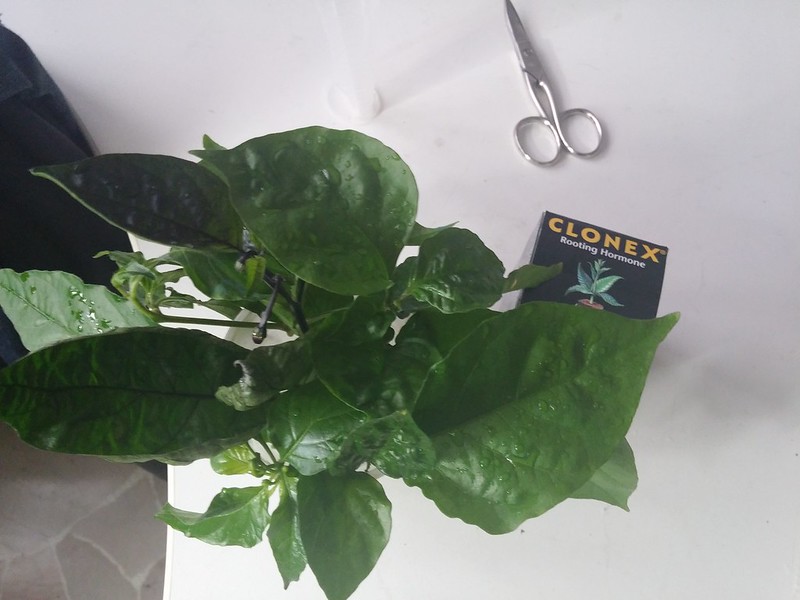
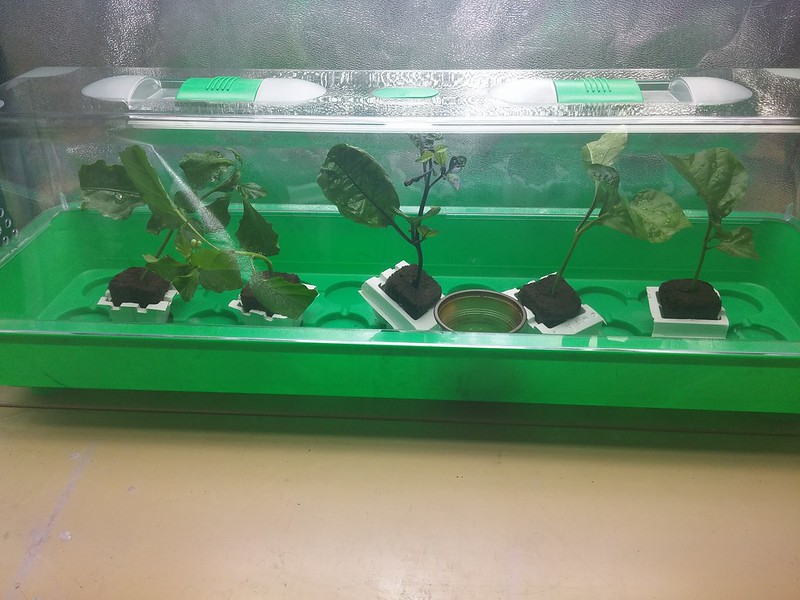
Surprises
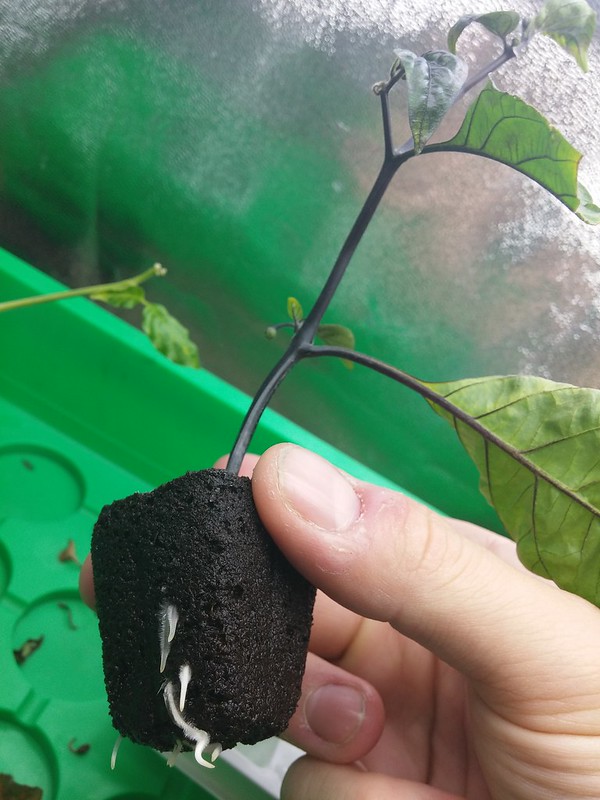
Rockin' in the free world
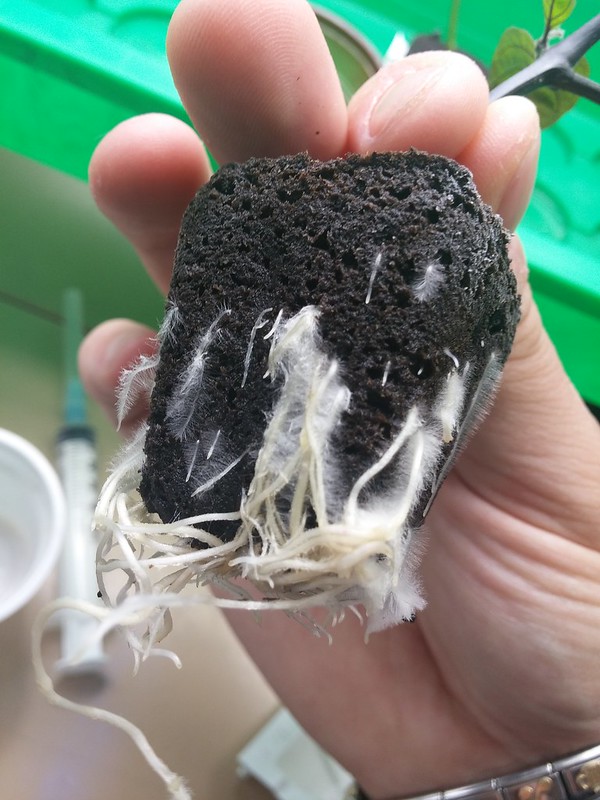
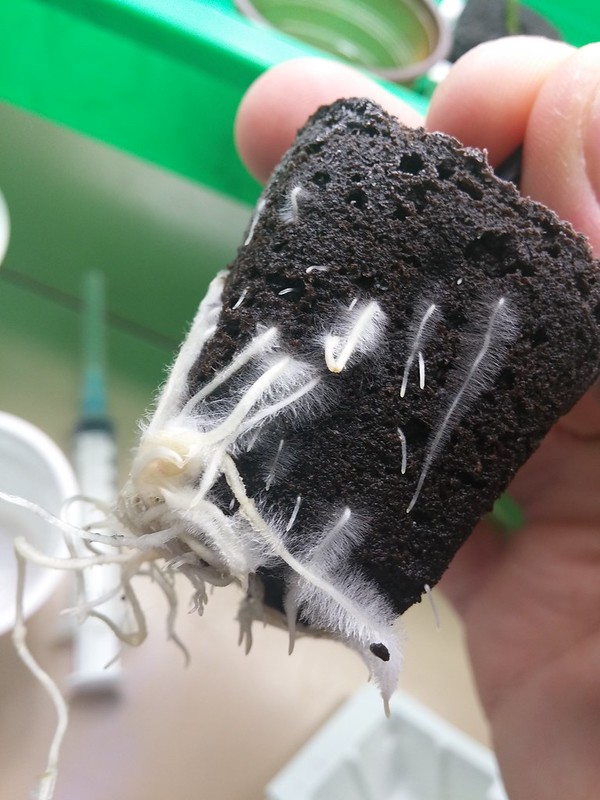
Final Result after a month!
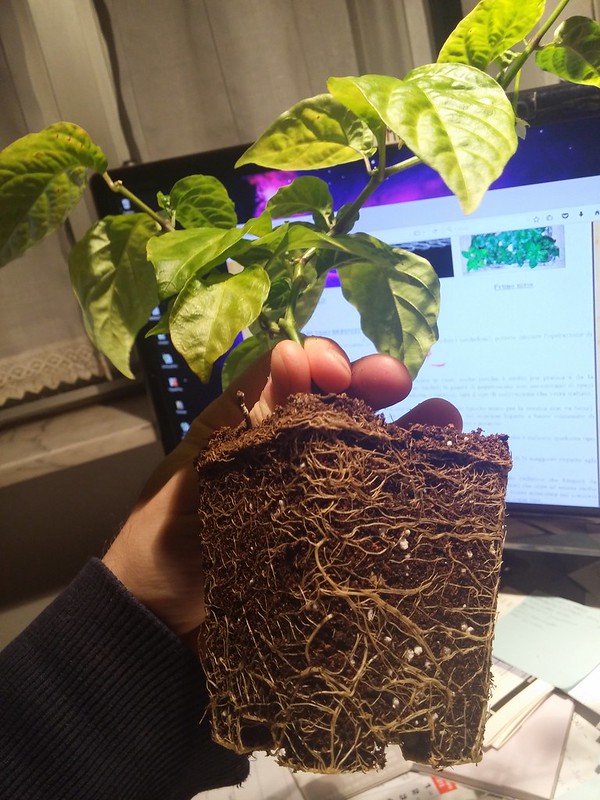
I paste for some articles I read.
Council of irrigating our parent plants with a nutrient solution to high levels of phosphorus (P) with a low content of nitrogen (N), for a week, before proceeding with the operation of cuttings, the nitrogen fatigues the formation of roots .
The cuttings can be removed from different parts of a plant: the lower branches of the plant resides a higher concentration of hormones responsible for the rooting but also by the stems higher we can achieve excellent results. We avoid the branches too large because it hard to root. So we choose a branch or the last part of it, about 12-15 cm long, having at least one pair of leaves and cut with a scalpel in point decided, at an angle of 45 °. The 45 ° cuts on the mother plant avoids the formation of shores around the severed.
Immediately immerse the stem of the cuttings in a glass of water, this avoids the formation of an air bubble inside the stem which causes the death of the young clone. Once removed the cuttings necessary, we move to the second phase. We prepare the stems removed to be transplanted. First we clean the base of the stem from any leaves; if the base of the stem are internodes leaf, they are the perfect spots to entrench the new plants. Subsequently, with a scissors sterilized cut all the tips of the leaves present on the terminal part of the sprig. It is important to cut the tip of the leaves because it facilitates breathing leaf: in the early days of the cuttings feed exclusively through the digestive fogliare. We prepare a solution containing nettle extract and adjust the pH to a value between 5.5 and 7.0. We drink the cuttings completely in the solution for a few seconds. After being pulled out of the solution, dive about 2 or 3 cm of the base of the stem in the bottle or any of Clonex rooting hormone: Let's get him out and insert it into the cube of rock wool catering to place them on the floor NOT perpendicular but somewhat "slanting. We arrange the pair of fluorescent tubes at the top of the incubator, at a distance of 2-5 cm from the cuttings and set the photoperiod to a regimen of 24h of light. Before closing the incubator, it is important to spray the cuttings with a sprayer. The ideal climate for growing new plants is a temperature of 25-26 ° C and humidity above 70%. You will need to nebulize the seedlings at least two times a day to keep them hydrated. In warmer periods of very careful, judge for yourself the water requirement. If you have a carpet thermal, positioned below the base of the incubator: the hot bed promotes rapid formation of roots but at the same time will force us to atomize most often the clones, which otherwise wither. However using a small humidifier is easy to maintain a moist enough. Remember, it is of vital importance for our cuttings, a moisture content above 70%. spray a little extract of nettle every 4-5 days, the cuttings helps to keep in good shape. In about ten days the cubes of rock wool will be filled with roots: at this point the clones are rooted.
Starting


Surprises

Rockin' in the free world


Final Result after a month!


